Microphone: what is it, types and characteristics, selection rules
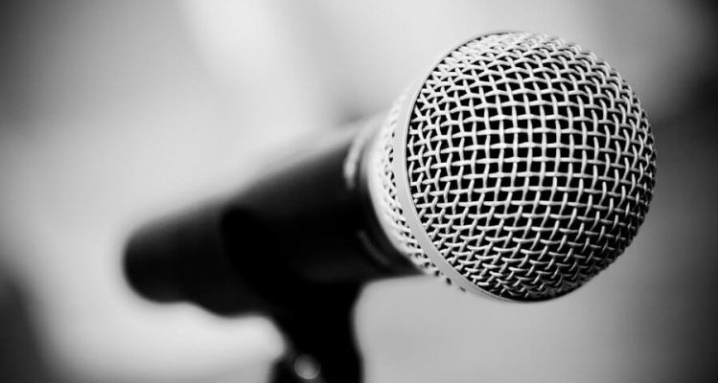
To choose the right microphone, you must first determine what it is, how it works. It is equally important to understand the types and characteristics of devices. And only after that it is possible to formulate clear selection rules, to determine the best models.
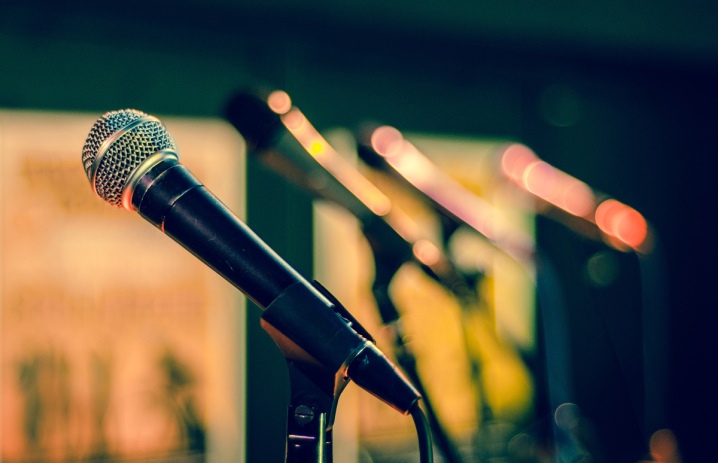
What it is?
It is difficult to find someone who does not know what a microphone looks like and what its typical use is. You can find a huge variety of such devices. But they all obey a common definition - electroacoustic devices. The sound wave arriving at the "input" is converted into an electrical signal. According to its characteristics, other equipment will be able to reproduce the original sound.
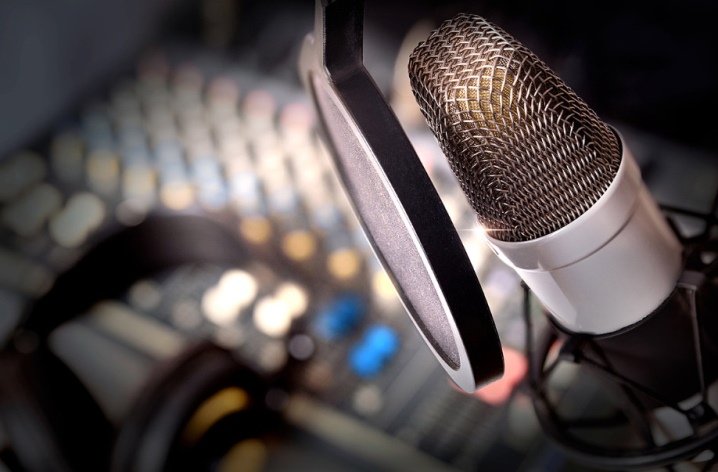
The microphone can broadcast sound to:
- ordinary home speakers;
- a computer;
- television;
- record player;
- player;
- concert equipment;
- studio recording equipment.

History of creation
Microphones in the 21st century are very advanced devices. But the main points in their work have changed since the invention. It is believed that the first approach to creating a microphone was made by the French researcher Du Monsel. In 1856, he established that a graphite electrode can significantly change the degree of electrical resistance. To do this, you only need to slightly change the contact area of the conductors.
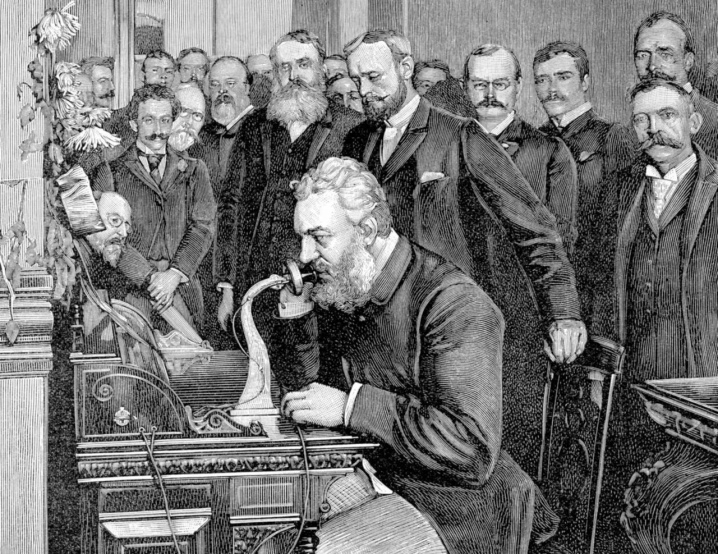
But the first practically working microphone was invented and introduced in 1877 by Emil Berliner. A year later, another US resident, David Hughes, modernized the original Berliner design. A membrane was added to one of the carbon rods. The decisive step was taken by the legendary Edison. It was he who came up with the idea of replacing coal rods with powdered coal mass; this solution continues to be used in some devices today.

Only in 1916, and again in the USA, more precisely, in Bell Labs, a capacitor circuit appears... A few years later, a subspecies of condenser devices, electret microphones, were introduced in Japan. And in Germany, a dynamic microphone device is being created. It was already ahead of both coal and capacitor models in a number of characteristics. And our compatriots Yakovlev and Rzhevkin presented a piezoelectric circuit to the world in 1925.
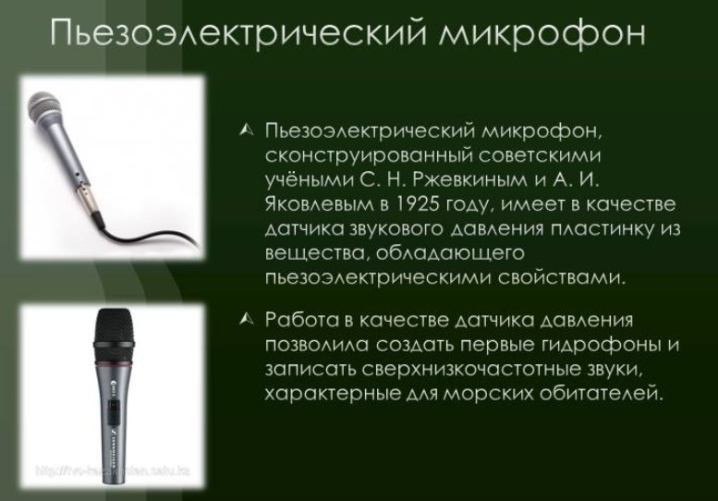
It has become very popular and is even actively used in hydrophones. In 1931, the next move was made in the United States. Developed there dynamic type of microphone with a coil. This device has excellent frequency response. It is not without reason that it continues to be used in recording studios in different parts of our planet.

Device and principle of operation
In general, the microphone is pretty simple. And the schematic diagram almost does not depend on the type of apparatus. When sound is applied to a thin membrane, the movement of that membrane generates electrical waves. Depending on how the device works, the generation of electrical oscillations occurs due to:
- changes in the capacitance of capacitors;
- phenomena of electromagnetic induction;
- piezoelectric process.

In describing how the microphone is made, it is important to emphasize that its properties depend on the peculiarities of the interaction of sound and diaphragm. A pressure microphone is a device in which a sound wave presses only on one side of the diaphragm. Apparatuses are also used in which it acts on the entire surface of the receiver.
Attention: the second side of the diaphragm in pressure microphones is not acted upon by direct waves, but by some kind of resistance. This resistance can be mechanical, acoustic, or created due to a time delay.
In the latter case, it is said to be a pressure gradient asymmetric microphone. Condenser microphone apparatus, in addition to the input, also consists of specially selected electrical capacitors. They are connected electrically in series to a direct current source and load resistor.

The structure of electret devices differs little. Maintaining a charge in them is provided by a layer of a special substance - an electret, which can work for at least 20 years. Since they have a built-in transistor, an external power supply is imperative. In this case, no polarizing voltage is required. As for dynamic devices, they work in the same way as speakers, but exactly the opposite. There is no need for phantom power.
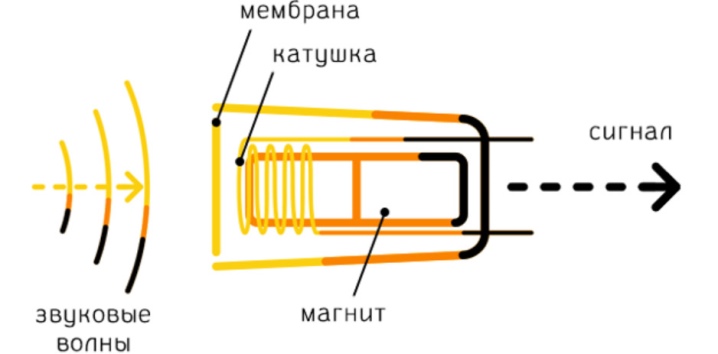
Reel type implies a rigid mechanical bond of the membrane with a special coil, which is located inside the annular gap of the magnetic system.
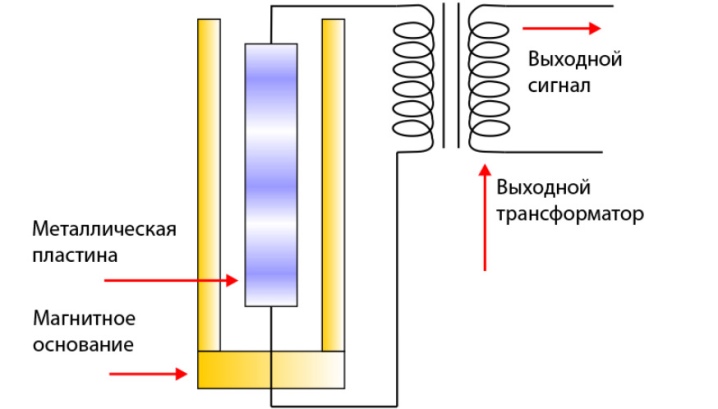
And also there are (but less often):
- tape;
- coal;
- optoacoustic;
- piezoelectric;
- combined (combining several solutions described above) devices.
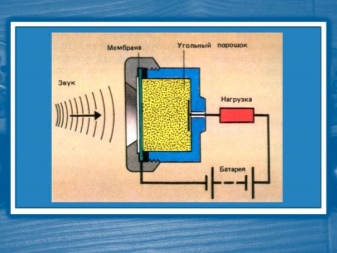

But it is useful to dwell on some more features of different devices. So, in a dynamic system, the diaphragm is connected to the coil and magnet. Together they form a small generator of electricity. It works as if from a sound drive. A permanent magnet is used to create a magnetic field surrounding the coil. He does not need a lot of power, reliability and accuracy of work are in the first place.
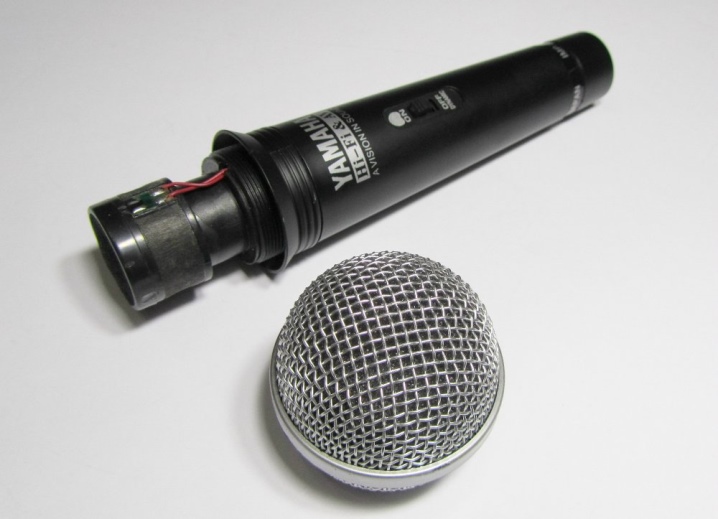
Dynamic microphones are relatively simple yet highly reliable. They will be able to guarantee excellent sound for almost any day-to-day task. Such systems can work successfully even with very loud sound, which wears out a lot of other acoustic equipment. Resistance to humidity and high temperature is also very important.
Therefore, it is the dynamic microphone that is most often chosen for organizing mass street events.
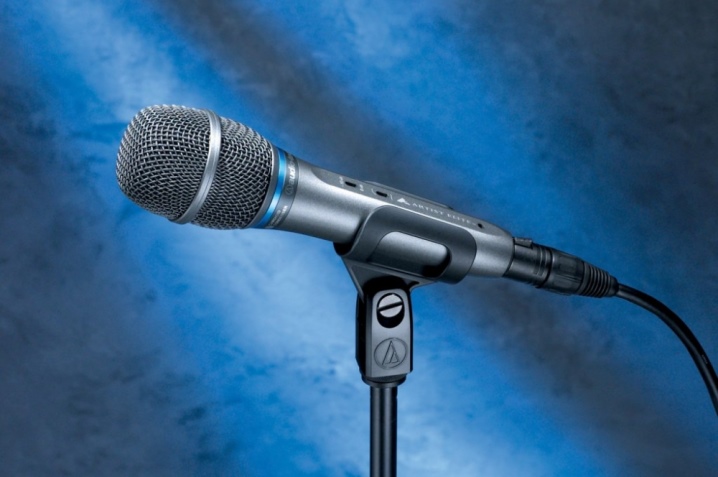
The condenser type is an assembly of a charged diaphragm and a fixed plate, and in general the structure acts as a sound sensitive capacitor... The membrane is usually made of metal, although there are options when it is metallized, and the main part is made of plastic. For sound reinforcement, an electret subspecies of a condenser microphone is usually used.
All of these models include active circuits to match the element's output to the basic microphone inputs.
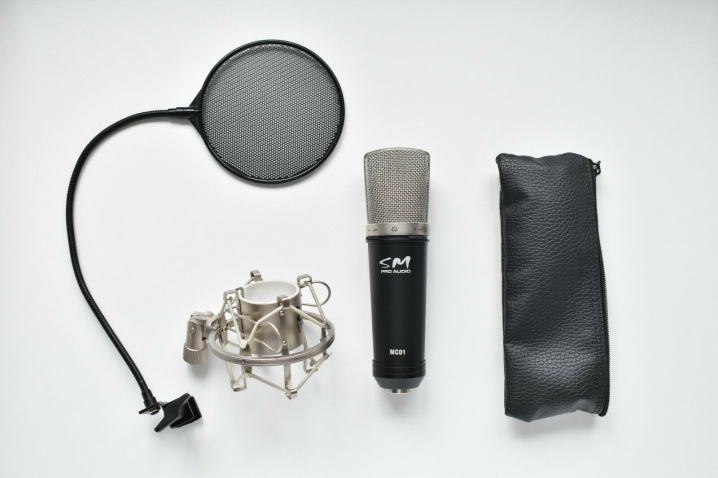
Specifications
A fundamentally important characteristic of a microphone is the so-called frequency response... For simplicity, in documents and special texts, it is referred to as the frequency response. Professionals and amateurs are also often interested in the directionality of the reception of sound waves. But the electrical characteristics and design features are not as important as it seems. For a capacitor circuit, the parameters of phantom power are fundamentally significant.
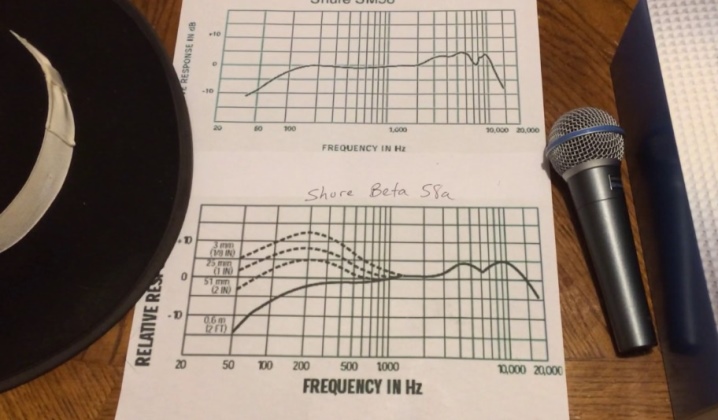
It is worth paying attention to the so-called transient response.
It is not hard to understand that the movement of the diaphragm by a sound wave causes this wave to expend energy. And in total, the mass of the diaphragm and the coil in a dynamic device is 1000 times higher than in a capacitor version. Both the beginning of the movement and its end are slower. This inevitably affects the sound quality.
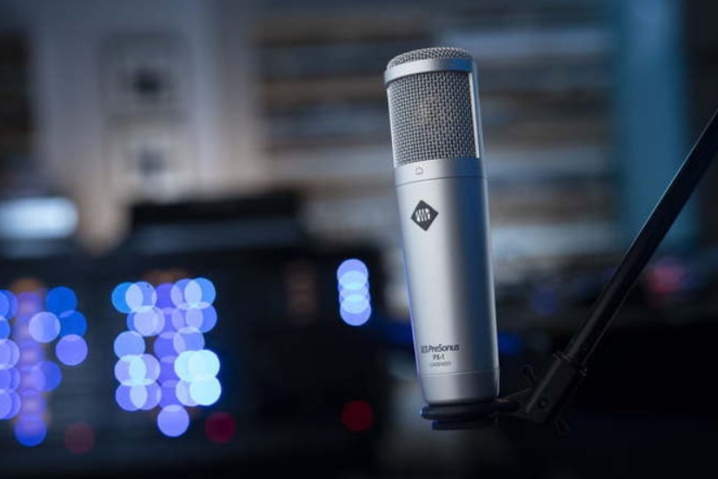
Returning to the frequency response, I must say that it is also the ratio of the output signal level to the entire operating frequency range. A rare manufacturer avoids describing the frequency response, in general, but usually it is given in a certain range. The most commonly used graph is to show the output level as the frequency changes.A flat line is usually typical for extended range microphones. They do not distort a wide variety of sounds; The embossed frequency response is selected not for the most accurate reproduction, but for solving strictly specific problems.
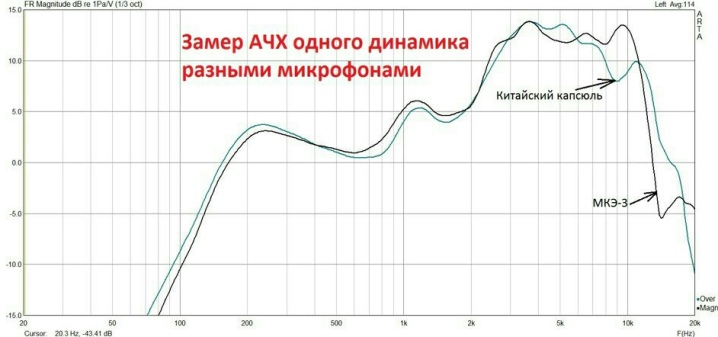
Additionally worth evaluating:
- decibels;
- focus;
- suppression of spatial noise;
- turning effect;
- impedance;
- output electrical level.
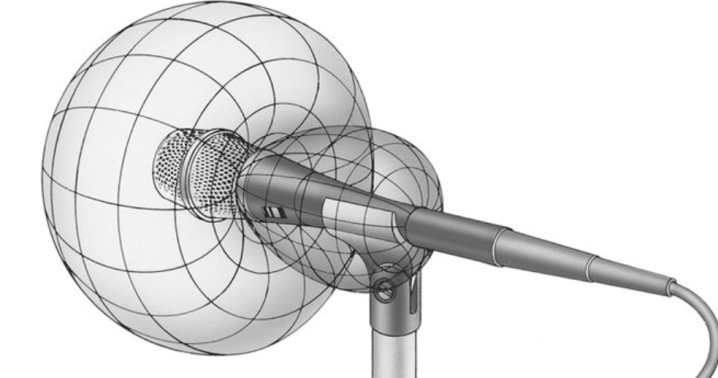
Views
All microphones can be classified according to several parameters.

By appointment
Special pop microphones are widely used. Contrary to the name, they are actively used not only in the theater, at concerts. Such a technique is needed wherever one or several people are to be heard by a large mass of spectators in the hall. Variety microphones can have various external designs. But they must be fixed firmly in the rack holders.
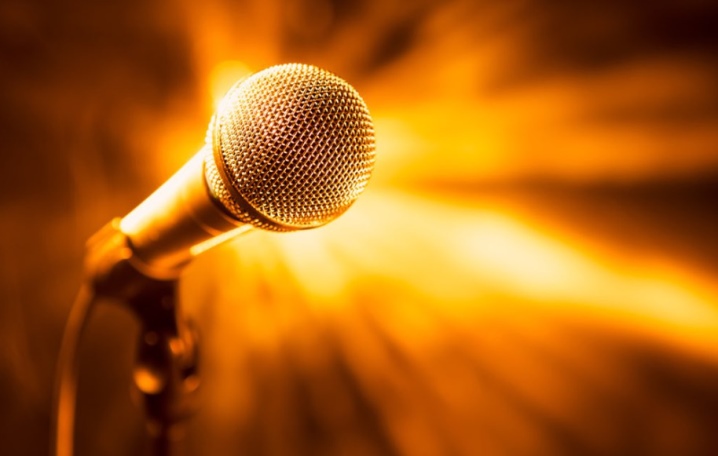
The reporter's receiver of sound, as you might guess, is intended for journalists. And for other people who need to record (broadcast) their own or someone else's voice in a variety of places. Of course, this is a mobile device, often with an autonomous power source. Such devices are usually designed for hidden wearing. The constructors provide for the possibility of their use even in windy weather.
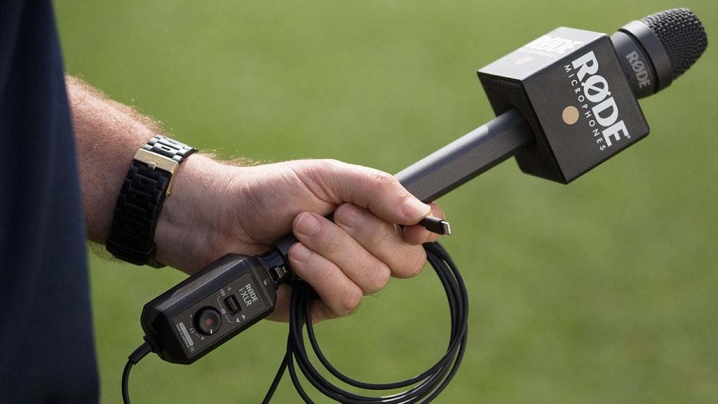
Main function studio microphones - operation in television studios. Most often these are flat and relatively unobtrusive devices. The acoustic unit in them is always of high sensitivity. A large frequency range is not required, as is the transmission of a variety of sounds. Studio technology works mainly with voices, but at the same time it must ensure their clear, uninterrupted transmission.
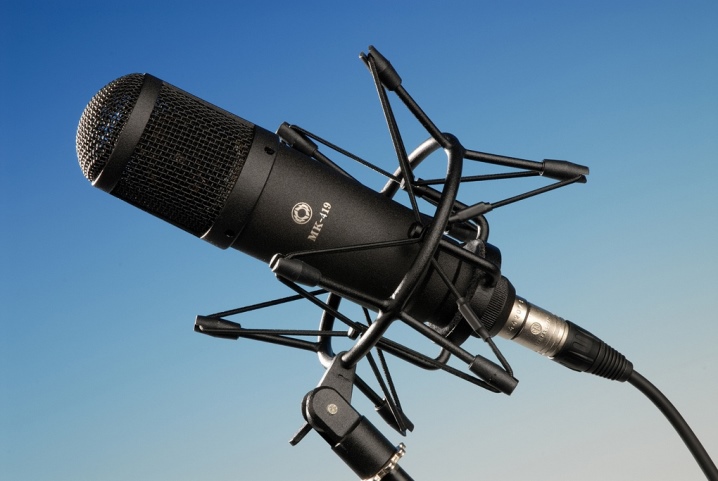
And here studio broadcast microphone will be interesting not only for the TV channel, but also for the radio station. All such devices are equipped with switches to easily change the direction of sound reception.

The next important view is microphone for sound recording in the studio. Usually it is mounted on specially prepared stands. Such equipment will perceive all the subtleties of sound, even with serious interference.
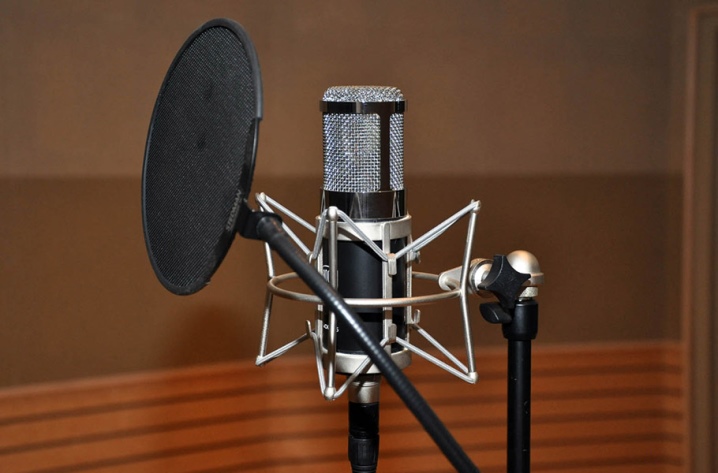
By the principle of action
Most of today's industry makes condenser and dynamic microphones. Other varieties can also be bought, but they are mainly needed for highly specialized tasks. The dynamic version always has ideal operating parameters. For its convenience and the absence of the need for power supply, it is appreciated by both TV correspondents and singers, comedians, entertainers. A condenser microphone, on the other hand, produces a more pleasant sound, and it does not depend on the frequency.
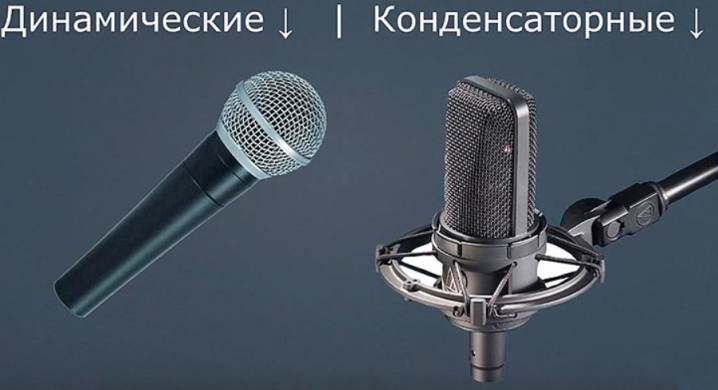
Head-mounted microphones are quite popular. They are fixed on the speaker's head and usually have a very narrow focus. Removal of extraneous sounds is practically excluded. This technique is widely used by actors, various instructors, commentators, leaders of tourist groups, and so on.
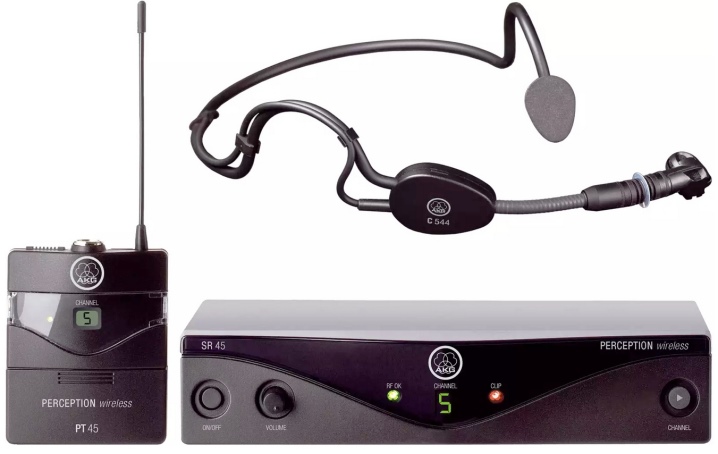
Lapel microphone, he is a "buttonhole", is as invisible as possible, and is suitable for those cases when there is no desire to disturb someone with his presence.
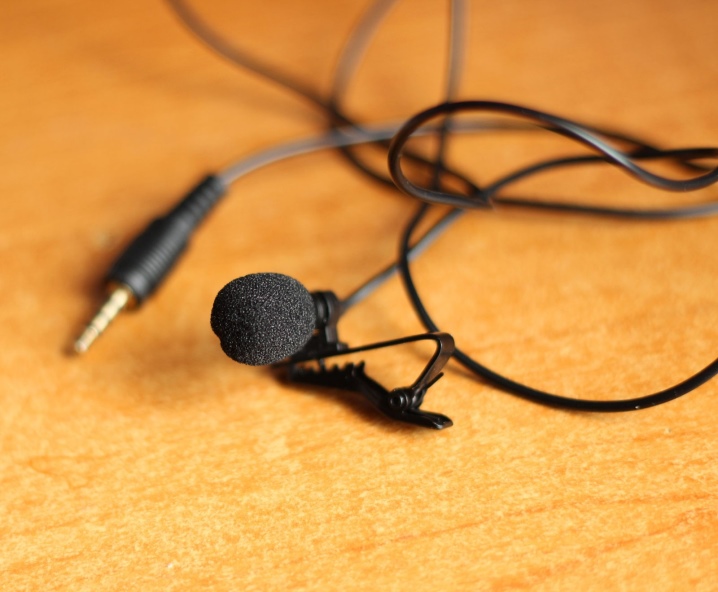
The following models may also stand out:
- for video filming ("guns");
- on-camera;
- stereo;
- boundary layer (in demand during negotiations);
- suspended;
- goose necks;
- measuring microphones.
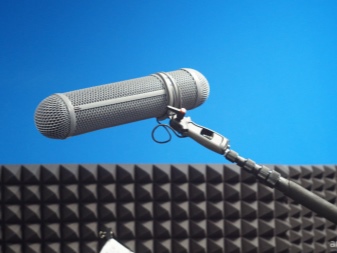
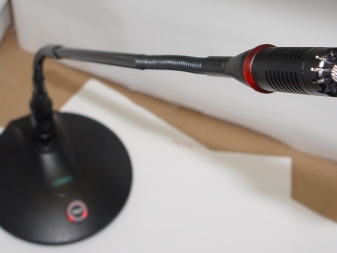
Criterias of choice
Choosing a good microphone correctly, focusing only on the volume, is unlikely to work. It is very important to ask to be shown the product in action. If accurate reproduction of sound is in the foreground, then the condenser version should be preferred. But such a solution can be used only where excessive sound pressure will not affect the recording result. That's why outside of the studio, dynamic samples are most often used.

Regardless of the fixation mechanism, you need to figure out what the size of the membrane should be. The small membrane format is capable of recording high frequencies very accurately and clearly. But it is very sensitive to even slight fluctuations in the air.
A large diaphragm microphone with a lower specific sensitivity, due to the large reception area, provides excellent sensitivity. There is only one drawback - a stronger echo.
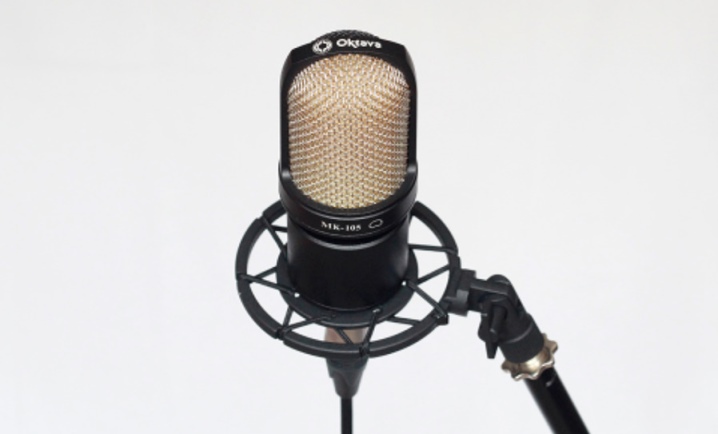
The advantages and disadvantages of mid-diaphragm microphones are difficult to determine. They combine, to varying degrees, the properties of small-membrane and large-membrane technology. Therefore, each device must be approached with its own, special measure. As for the microphone sensitivity, not everything is clear. Very high sensitivity can interfere if the room or other recording area is poorly prepared.

Unidirectional microphone can catch waves coming from one direction. It is recommended for use at concerts, during theatrical performances. Bidirectional models (octal and some others) concentrate sound coming from opposite sides. This solution is suitable for interviews on television or for recording in a large concert hall. Immediately, you will be able to record the audience's reaction to the performance.

Omni-directional microphone type will record sounds from all directions... The sound in this case is most natural. However, this technique should only be used in well-equipped rooms. Extraneous sounds can be extremely detrimental to the recording. In addition to the listed nuances, it is worth considering:
- type of microphone power supply;
- view of its connector;
- the ability to adjust the volume;
- the ability to stop recording altogether.

Top Models
Of course, among the attractive versions of microphones are Sennheiser Handmic Digital. The pretty black color is by no means the only virtue of the dynamic handheld microphone. It has a sturdy metal body. You can use the device for interviewing and recording music via iOS devices. Experts from Apogee, one of the favorites in digital acoustics, were involved in the development of the model.
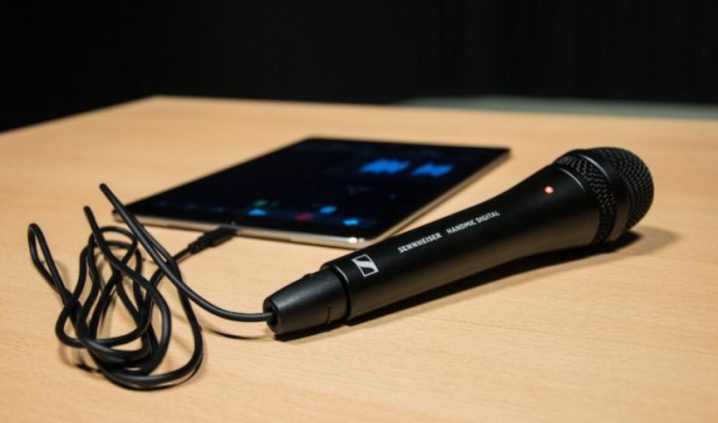
The designers took care of the prevention of blowing and side noise exposure. The resulting record can almost always be published immediately. And in other cases, you only need a simple editing of the audio recording. The performance is very durable, the microphone is reliably protected from shocks.
Engineers have done their best to minimize interference from cell phones.

The technical parameters are as follows:
- cardioid chart;
- weighted equivalent noise level 74 dB;
- there is no recording mute button;
- microUSB connector;
- frequencies from 0.04 to 16 kHz;
- permissible sound pressure up to 99 dB;
- 2m USB cable.
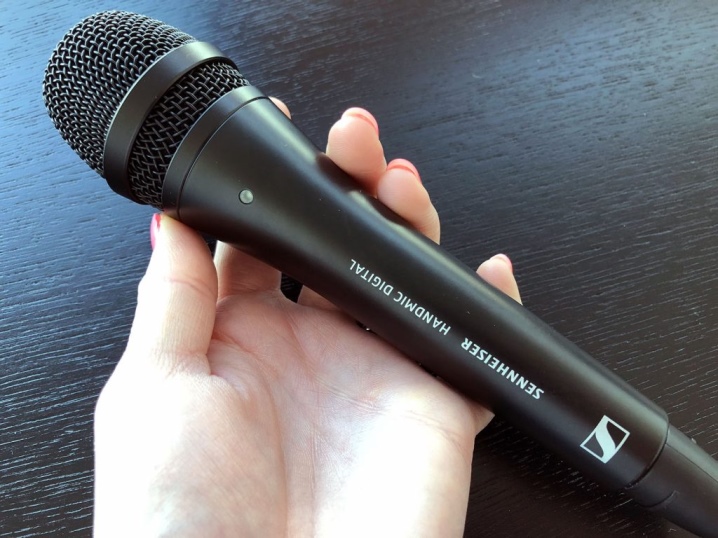
The model also deserves attention. E835 from the same manufacturer. The design is optimally aligned so that vocals and backing vocals can be scored. Provides protection against sounds coming off the directional axis. There is also protection against parasitic feedback. There is an anti-shock suspension on the capsule; the silent switch is equipped with a latch.
Practical properties:
- balanced output across all frequencies;
- "Warm" balance in tones;
- cardioid chart;
- there is no Mute button;
- resistance rating 350 Ohm;
- the smallest load resistance 1000 Ohm;
- XLR connector;
- processing of frequencies from 40 to 16000 Hz;
- sensitivity level 2.7 mV / Pa;
- operating temperature range from 0 to + 40 degrees Celsius.
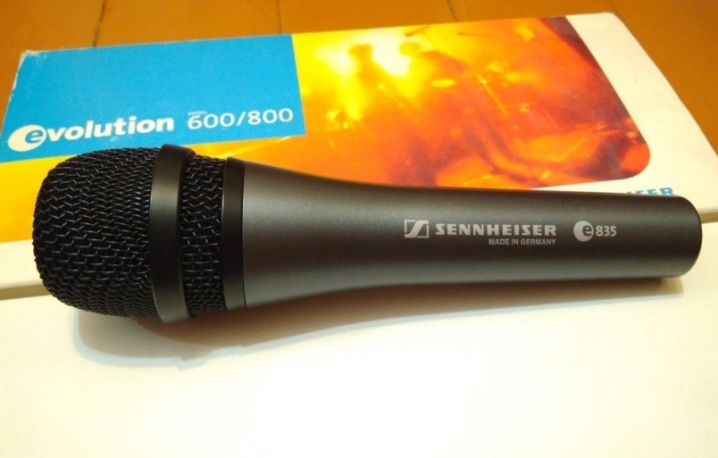
It is very popular and VideoMic NTG... It is appreciated primarily for its versatility. The annular line tube with special perforation guarantees extraordinary transparency and natural sound. By means of digital switching it is possible to gain access to the high-pass filter and a special safety channel. The PAD option is implemented - 20 dB.
The 3.5mm automatic output is great for connecting to a camcorder or mobile phone. An updated, more comfortable decibel indicator helps prevent accidental clipping. The high-pass filter can be set to 75 or 150 Hz.Gain is infinitely variable.
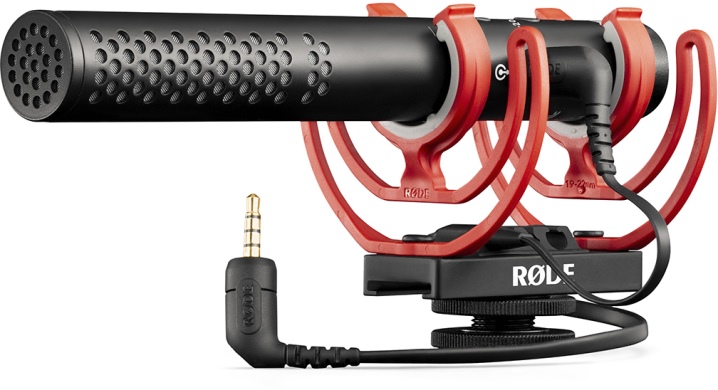
The condenser microphone also deserves attention. Rode TF-5 with a small aperture. It is characterized by a cardioid sound acquisition diagram. The capsule is redesigned. In its design, the precision of parts is less than a micron. The manufacturer promises impressive sound clarity and unique warmth.
Even other small diaphragm Rode microphones are noticeably inferior to the TF-5. A very clear, airy sound is guaranteed. Saturation with warm tones is added to it. The audio pairing is very well done.
The device is recommended as a stereo pair in the most difficult recordings, as well as for capturing the finest nuances of sound.
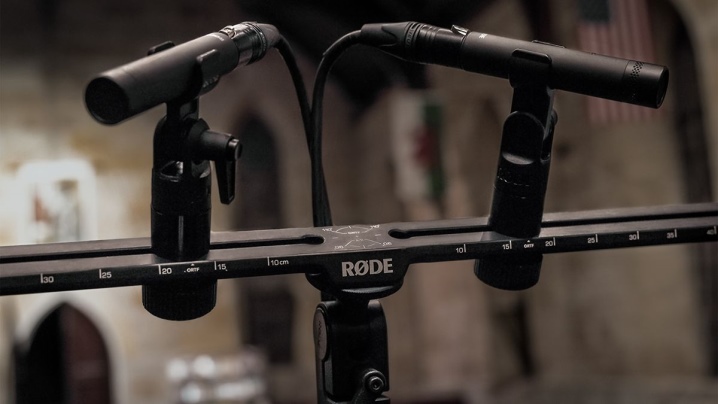
Another attractive model - Shure 55SH Series II... The design is deliberately made in the style of the 1950s and 1960s. At the same time, the body of the dynamic microphone is quite modern. It allows you to reproduce the most solid vocals without unnecessary problems. The cardioid sound diagram helps a lot with this. The range of processed frequencies is from 50 Hz to 15 kHz.
Other parameters:
- successful speech development;
- the impedance is declared 150 Ohm (according to experts, 270 Ohm);
- standard XLR connector;
- open circuit voltage at a frequency of 1000 Hz - 58 dB;
- chrome cast body;
- input resistance 75-300 Ohm;
- dimensions 5.6x18.8x7.8 cm.
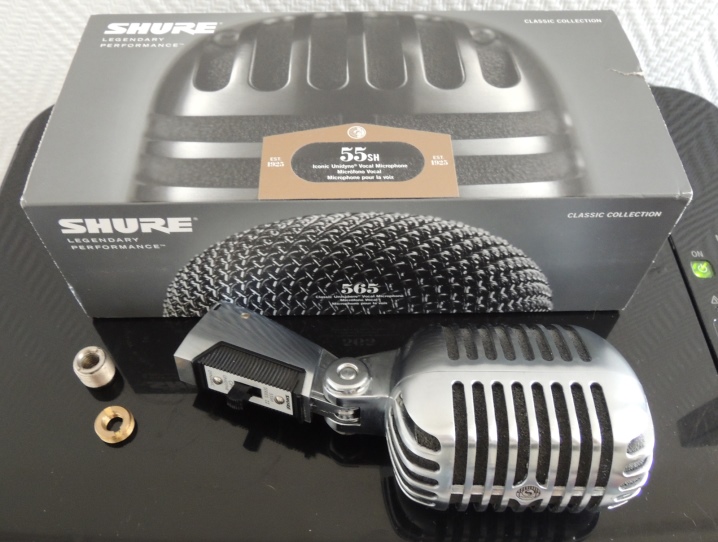
Completion of the review is on the model Shure beta 87. The manufacturer positions its development as "the ideal condenser microphone for vocals." He will be able to convey all the richness of sounds, avoiding off-axis additives. The frequency response of the signal is as flat as possible. The design is different:
- increased resistance to noise;
- in demand among professional performers;
- extended frequency spread (0.05-18 kHz);
- unidirectional supercardioid diagram;
- electrical resistance 150 Ohm;
- output signal at a level of 74 dB.
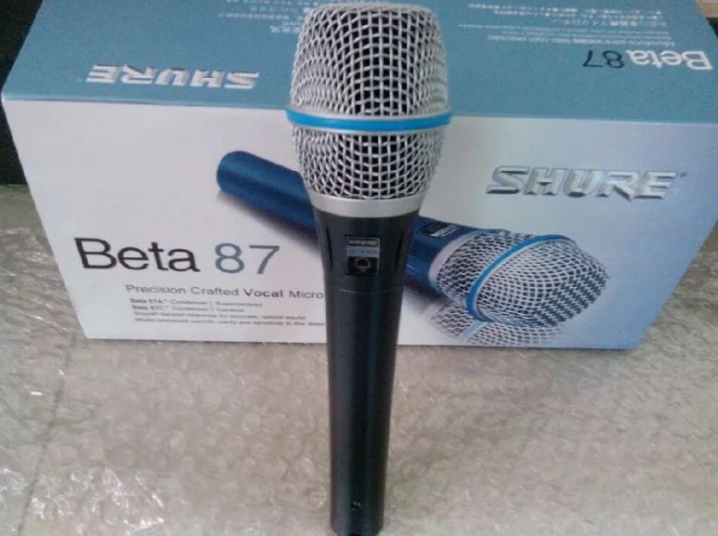
In the next video, you will learn how to choose the right microphone for shooting video on a smartphone.













The comment was sent successfully.